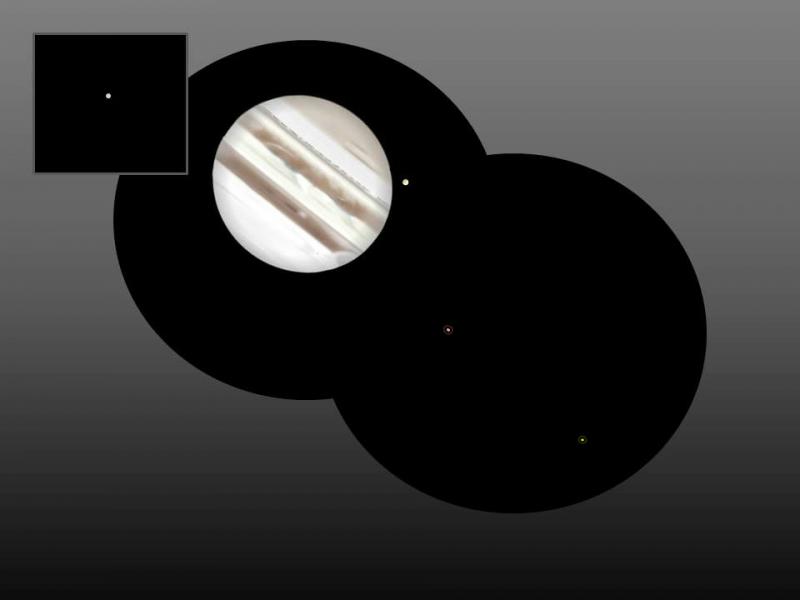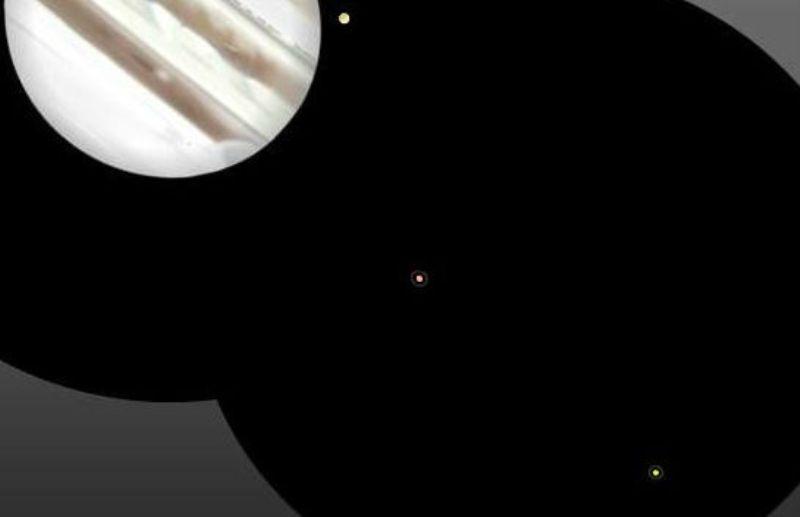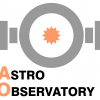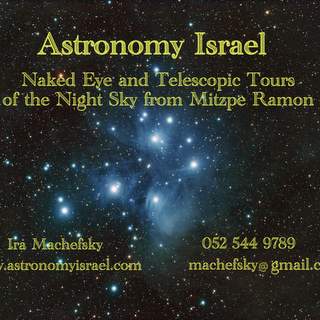Yea, Eddgie, I am still chewing on what it means to resolve something that small. But, if I may...
...both generate Airy Disks that are seperated by 1.2 Arc Seconds (the width of Io's Disk).
He can only "Infer" it because of the diffraction making the disk appear slightly elongated.
Exactly. Not easy by any stretch. In fact, I am wondering if a 4" could do it. That would be one for the books.
If there is a brighter equitorial region, and a darker limb on either side of that, then I think diffraction could indeed permit a 6" instrument to see that the "Length" of the "Line" (the brighter equitorial region) could appear to be stretched out because the very edges where the limb was darker would taper off before the ends of the line.
You know, resolution depends on contrast. And not just the length of several spurious discs in a row that end against a dark sky (devoid of any point source diffraction), but also the height of Io from pole to pole. I am not saying I saw any spurious discs from the poles, though, as you have.
In Raleigh, resolution means two white (half lines) and one dark. That is 1 line pair/one or cycle within the Raleigh limit. It could mean two dark (Io's poles) and one white (the equatorial region.) As long as those line pairs are resolvable at Raleigh (28% contrast?) or Dawes (5% contrast), then true resolution is said to occur. And those spatial frequencies are not even at the limit of the MTF, theoretically speaking. Dawes is not even at the maximum spacial frequency, but stops just short at 5% contrast. And that far out the curve, the spurious discs in an obstructed scope are smaller. Brighter on Io, but smaller, too. I think Suiter uses Abbe limit as maximum resolution. But those contrasts are, by convention, said to be between two bright lines (or technically point sources for double stars.) I am not sure I actually resolved the equatorial region in the pure sense. Interesting thinking about it, though.
Io is different in that resolution is exactly like the one white line between two darks you describe. So, even at 1.2" arc, that frequency is still well (outside) the Raleigh limit (half the Airy disc, a dark space, then half the other Airy disc with the centers separated by 0.92" arc. Right?)
You might be able to go even smaller to the Dawes limit which is an even tighter line pair. But at 5% contrast at the poles, one might imagine it get's a lot more difficult at this point and beyond.
Then there is the complicated math governing multiple point sources with decreasing optical path distance. At zero OPD, the Airy disc actually expands both in diameter and in intensity. At greater OPD, such as Io's multiple Airy patterns, the Airy (an spurious) discs returns to pretty much normal in both aspects.
I still don't fully understand how to apply the latter.
..In fact it stands in stark testimony to the laws of physics, resolution..
I think were we might talk past each other is in the way resolution is "defined." Resolution, per se, is not a law in that it can only occur the way Raleigh, Dawes, or Mr. Sparrow say. They define resolution as some level of contrast between two points and then develop their math from that definition. But, I guess the Airy disc is a law of physics, Dawes really is not. But, it helps if we all use the same definition.
-----------------Off topic------------------but related.
I was skeptical of Uranus observations, well, because 2% (low) contrast on the planet is just not modulated through the scope efficiently enough at that spacial frequency. It would be visible on the focal plane, where a CCD could capture it. But the human eye just could not resolve such low contrasts. Not average vision, anyway. The other thing that bugged me was the color of the bands so far into the red.
But, hey, that's theory. Today I take it a bit easier on those claims and offer the benefit of the doubt. He might just be able to do it, and a few others with exceptional abilities as well. But, again, that's the skeptic mind set, to shrug it off as impossible when some document somewhere proves it can't be done. Well, here we are...
I no longer totally doubt the Uranus observations. Still have to overcome some skepticism, though. But, an open (and suggestible mind) helps immensely.
























